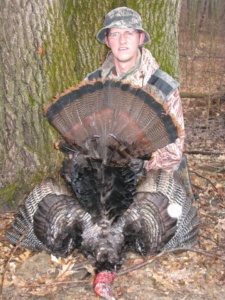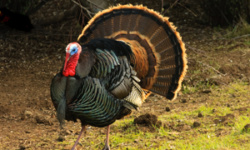Now is the time to pull out all your turkey hunting gear and check that it is all in good working order and ready for your spring hunt.
Get out there and pattern your shotgun so you know what to expect when you pull the trigger. Shoot it at everything from five to 50 yards and pay close attention to how big your pattern gets. You don't want to be shooting at a bird farther than what your expected kill range would be. After you are done patterning your shotgun, make sure to clean it to prevent misfires or jammed shells during the hunt. It should only take one shot, but it is always nice to know that second one is there if you need it.
Set up your blinds and make sure they are in good working order. Become familiar with how to set it up and take it down just in case you need to adjust quickly on your spot. Don't forget to stake down your blind; you never know when a gust of wind will show up and "relocate" your setup.

Get everything prepared before your season shows up so you have a better chance at a successful hunt.
Check and clean all your decoys, and make sure you have all the stakes to keep them standing tall. The last thing you want to happen is for your decoy to tip over as a big longbeard approaches.
Pull together all your turkey hunting camo – hats, gloves, masks and more. Make sure it all still fits (some of us expand over the winter months). It's best to wear something that you are able to layer, as the mornings can start out well below freezing, but the afternoons can be quite balmy.
Round up all your calls and tune them up. You've been perfecting your turkey talk already, right? Have chalk for your box calls and sandpaper for your slate calls. Practice, practice, practice.
Other items to gather include a camo cushion, small pruner for shooting lanes, a rangefinder for judging distances, a pocket knife for notching your tag, zip ties for attaching your tag, short lengths of rope, and insect repellent for those later seasons. I keep a small plastic bag and rubber bands to put over the turkeys head to keep the mess off your back when carrying out a harvested bird.
Get prepared and good luck hunting!






